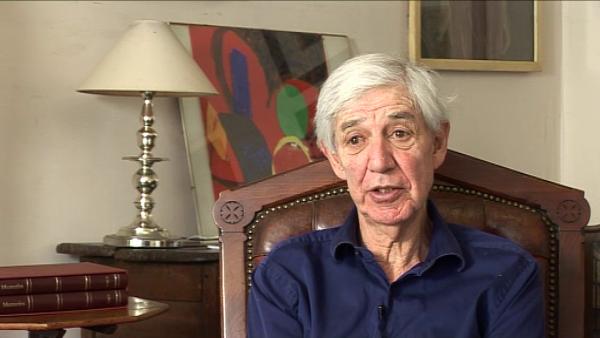NEXT STORY

Left-right asymmetry
RELATED STORIES

NEXT STORY

Left-right asymmetry
RELATED STORIES


|
Views | Duration | |
|---|---|---|---|
| 11. Sydney Brenner and Francis Crick | 529 | 03:29 | |
| 12. French Flag Model | 900 | 01:11 | |
| 13. Reaction diffusion theory that goes back to Alan Turing | 497 | 03:41 | |
| 14. Amata Hornbruch and colleagues at the Middlesex Hospital Medical... | 281 | 02:33 | |
| 15. Controversy over positional information | 277 | 02:11 | |
| 16. Left-right asymmetry | 292 | 01:44 | |
| 17. Being elected a Fellow of the Royal Society | 281 | 07:46 | |
| 18. My theory on the evolution of multicellularity | 280 | 01:10 | |
| 19. Cognitive therapy treatment for my depression | 1 | 609 | 03:44 |
| 20. Belief in cause and effect is what makes us human | 373 | 04:46 |


For this axis, we had a model in which, when the limb was growing, cells near the tip were in a special region, which we called the Progress Zone and cells were continually leaving the Progress Zone and they measured how much time they spent there. If they spent a very short time there, they would make this structure; if they spent a long time there, they’d be at the tip of the digits. And we did do various experiments that fitted with this quite... quite nicely and... however, even today, the experiment or the... the model, is really quite controversial. A friend of mine who is a professor of genetics in Harvard — Cliff Tabin — really doesn’t accept the model at all and I don’t accept his objections to the model. And this one model here with a signal from this region here setting up a gradient as Cheryll Tickle has shown, is really much more complicated than... than we originally thought. But nevertheless, it’s... it’s not too bad and we really had a... a very enjoyable time working this out. However, I must say that when we come to positional information in general, we still really are pretty ignorant of the molecular basis and although Francis Crick had put forward the idea that the way cells would know their position, would be with making a molecule here and then diffusing, you know, diffusing along, this would tell the cells where they were... in fact, I’ve just written a paper with my friend Michel Kerszberg, saying that diffusion is just too unreliable a mechanism for giving cells their positional identity and cell... direct cell-to-cell contact in some really quite complex way, would be a much better way of doing it. But it’s an un... it’s a largely unresolved problem.
Lewis Wolpert (1929-2021) CBE FRS FRSL was a developmental biologist, author, and broadcaster. He was educated at the University of Witwatersrand (BSc), Imperial College London, and at King's College London (PhD). He was Emeritus Professor of Biology as applied to medicine in the Department of Anatomy and Developmental Biology at University College London. In addition to his scientific and research publications, he wrote about his own experience of clinical depression in Malignant Sadness: The Anatomy of Depression (1999).
Title: Controversy over positional information
Listeners: Eleanor Lawrence
Eleanor Lawrence is a freelance science writer and editor, and co-author of Longman Dictionary of Environmental Science.
Tags: Cliff Tabin, Cheryll Tickle, Francis Crick
Duration: 2 minutes, 11 seconds
Date story recorded: April 2010
Date story went live: 14 June 2010